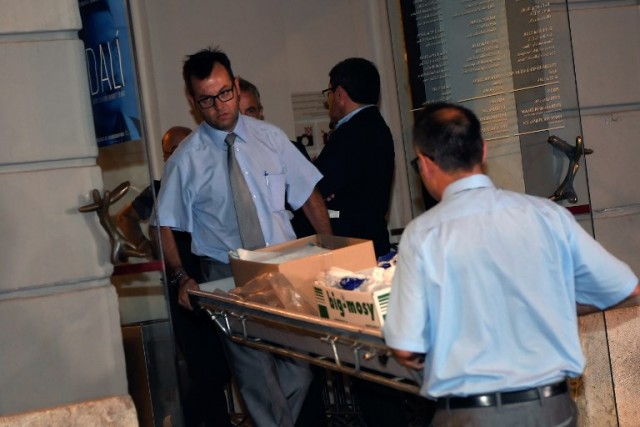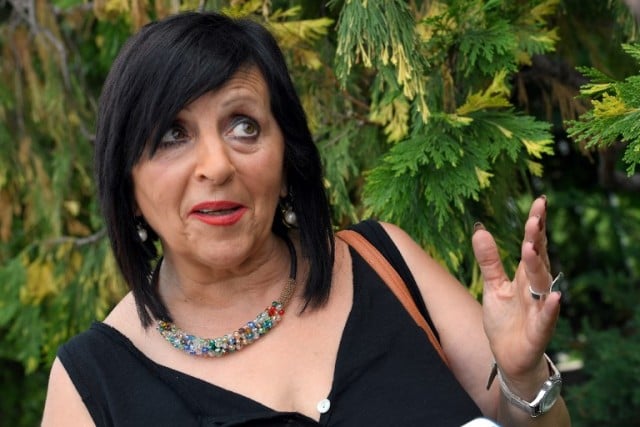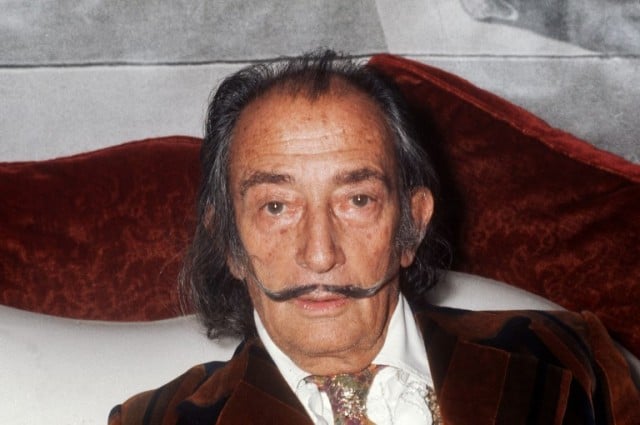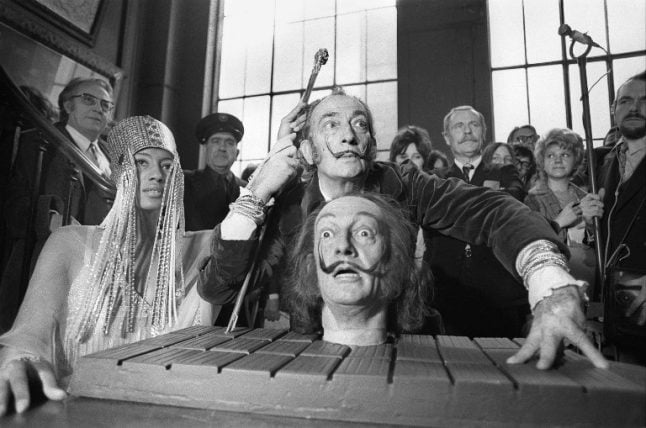Narcis Bardalet, who was responsible for embalming Salvador Dalí's body 28 years ago was at his grave the moment he was exhumed on Thursday night.
“His face was covered with a silk handkerchief, an exquisite handkerchief. As I removed the handkerchief, I saw with great joy how his mustache remained intact, pointing to 10-past-10 (like on a clock face), just as he wanted,” Bardalet told Catalan radio station RAC1 on Friday morning. “It's a miracle”.
“It was a moving moment for him and for us,” Lluis Penuelas Reixach, the secretary general of the Salvador Dali Foundation, told a press conference.
He confirmed that DNA samples were taken from “his skin, nail and two long bones.”
Forensics experts exhumed Dalí's remains from a tomb in his Spanish hometown on Thursday, nearly three decades after his death, in order to test a fortune teller's claims that she is the only daughter of the surrealist.
Working behind closed doors, they removed a slab weighing more than a tonne which covers the tomb of the artist at the Dalí Theatre-Museum in Figueres in northeastern Spain where he was born.
“The biological specimens have been taken from Salvador Dalí's remains,” Catalonia's High Court of Justice said in a statement around 11:50 pm (2150 GMT).
It said Dalí's coffin had been opened at 10:20 pm so that work could begin.
 Forensic experts leave the Dalí museum after taking the DNA samples. Photo: AFP
Forensic experts leave the Dalí museum after taking the DNA samples. Photo: AFP
The DNA samples in the form of bone or tooth fragments will be sent to Madrid to undergo the necessary tests.
A crowd of onlookers gathered outside the elaborate museum of Dalí's work to watch as police escorted the experts into the building which is topped by a huge metallic dome decorated with egg shapes. Dalí designed the building himself.
The museum, a top tourist site that drew over 1.1 million visitors last year, was covered in some places with cloth to prevent drones from capturing images.
“A day like this arouses in me a great deal of feeling because it reminds me of the day of his death,” Maria Lorca, who was the mayor of Figueras at the time of Dalí's death in 1989 at age 84, told AFP.
The eccentric artist would have enjoyed the atmosphere outside the museum, Lorca added.
“He would feel at home, it is a day that suits his way of being,” Lorca said.
READ ALSO: Six surreal facts from the life of Salvador Dalí
A huge fortune
Pilar Abel, a 61-year-old who long worked as a psychic in Catalonia, says her mother had a relationship with the artist when she worked in Cadaques, a picturesque Spanish port where the painter lived for years.

A Madrid judge last month granted her a DNA test to find out whether her allegations are true.
If Abel is confirmed as Dalí's only child, she could be entitled to 25 percent of the huge fortune and heritage of one of the most celebrated and prolific painters of the 20th century, the woman's lawyer Enrique Blanquez said.
Dalí's estate, which includes properties and hundreds of paintings, is entirely in the hands of the Spanish state.
The Salvador Dalí Foundation which manages the estate says it was worth nearly €400 million ($460 million) at the end of 2016. The Salvador Dalí Foundation is to provide details of the exhumation at a press conference on Friday at 8:00 am (0600 GMT).
Abel has already provided a saliva sample for comparison and the results are expected within a matter of weeks.
In an interview with AFP last month, just days after a court ordered the exhumation, Abel said her grandmother had told her she was Dalí's daughter when she was seven or eight years old. Her mother admitted it much later.
Abel is from the city of Figueras, like Dalí, and she said she would often see him in the streets.
“We wouldn't say anything, we would just look at each other. But a glance is worth a thousand words,” she said.
'Known in the village'
A question has always hung over his sexuality, with some claiming he was a closet homosexual who preferred to watch others having sex rather than taking part.
But according to Abel's lawyer Blanquez, his affair was “known in the village, there are people who have testified before a notary”.
Born on May 11, 1904 in Figueras to a bourgeois family, Dalí developed an interest in painting from an early age.

In 1922 he began studying at the Fine Arts Academy in Madrid where he developed his first avant-garde artistic ideas in association with poet Federico Garcia Lorca and the filmmaker Luis Buñuel.
Soon he left for Paris to join the surrealist movement, giving the school his own personal twist and rocketing to fame with works such as “The Great Masturbator.”
Returning to Catalonia after 12 years, he invited French poet Paul Eluard and his Russian wife Elena Ivanovna Diakonova to Cadaques.
She became his muse — he gave her the pet name Gala — and remained at his side for the rest of her life.
They never had children and she died in 1982, seven years before Dalí's death.



 Please whitelist us to continue reading.
Please whitelist us to continue reading.